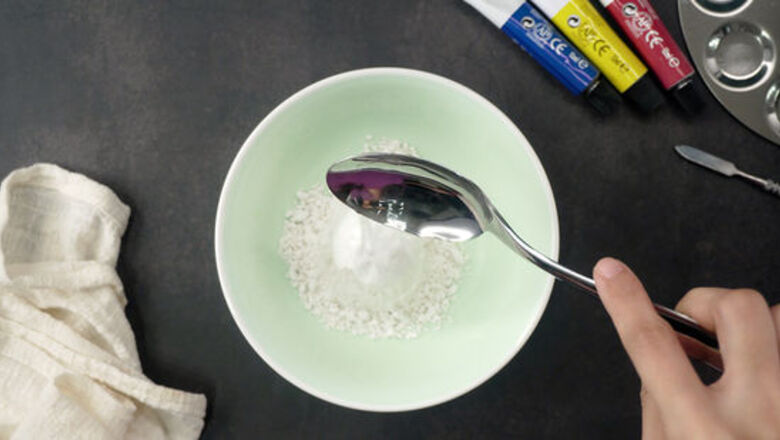
views
Acrylic Gesso

Dissolve whiting chalk in enough water to make a paste. Put whiting chalk or calcium carbonate into a container and slowly stir in a few drops of water. Keep stirring in more water until the chalk dissolves and forms a thin paste.Tip: If you don't have whiting chalk or calcium carbonate, finely grind a few sticks of white chalk. You can purchase whiting chalk from home improvement stores or online. If you want to make a small amount of gesso, try using about 1 tablespoon (8 g). If you prefer, you can mix a small amount of gesso directly on a paint palette using a palette knife.
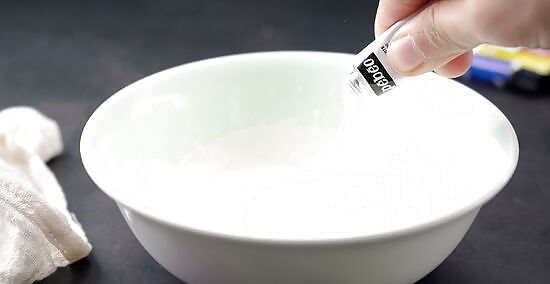
Squirt in equal parts of acrylic polymer gloss medium and white paint. Get out a bottle of acrylic polymer gloss medium and squeeze in about the same amount as your chalk paste. Then, squeeze in the same amount of titanium white acrylic paint. You don't have to be exact in these ratios. For example, if you don't need the gesso to be very white, you could leave out the titanium white acrylic paint. If you want very white gesso, try adding 2 or 3 times as much white acrylic paint.
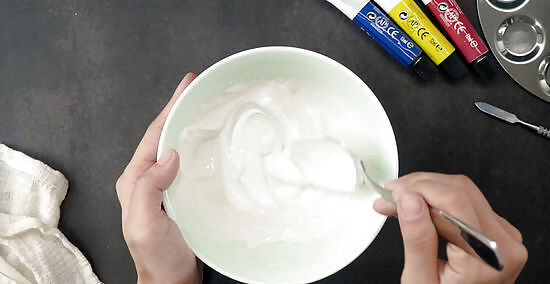
Mix the chalk paste with the paint and gloss medium until it's smooth. If you're mixing the gesso in a container, use a spoon or stirring rod to thoroughly combine the materials. If you're mixing the gesso directly on a palette, use your palette knife to mix them. You shouldn't see any lumps of paint or gloss medium once you've finished mixing the gesso. The gesso should be the consistency of house paint once it's ready to use.
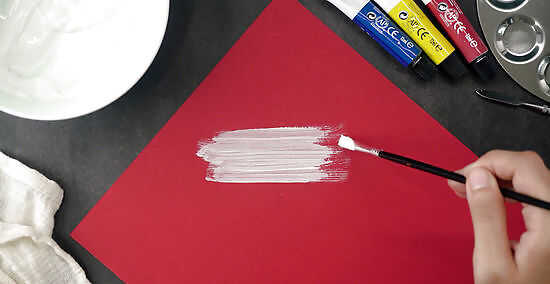
Brush the gesso over your surface before you paint with acrylics. You can prime canvas, raw linen, cotton, paper, fiberboard, or wood. Leave the gesso to dry completely before brushing on additional coats. Each coat should dry for 10 to 20 minutes. Then, leave the material to dry for 12 hours before working on it with acrylics.Tip: To store leftover acrylic gesso, cover the container tightly with a lid or plastic wrap and keep it at room temperature. Avoid coating an old oil painting with acrylic gesso since it will peel or crack. If you'd like to paint over an old oil painting, cover it with oil gesso instead.
Traditional Oil Gesso
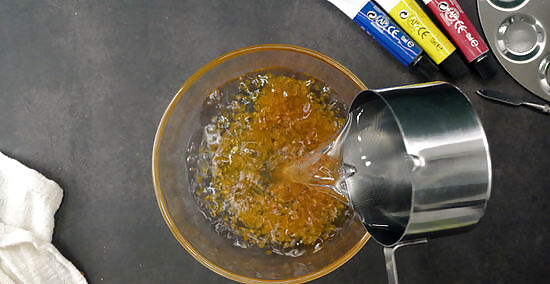
Soak dried animal glue in water for at least 3 hours. Use 1/2 cup (70 g) of dried animal glue and 4 cups (950 mL) of water. Measure the dried glue and put it into a heat-proof bowl. Then, pour in the water and leave the mixture at room temperature for at least 3 hours so the glue swells. You can prepare the animal glue solution overnight if you prefer.
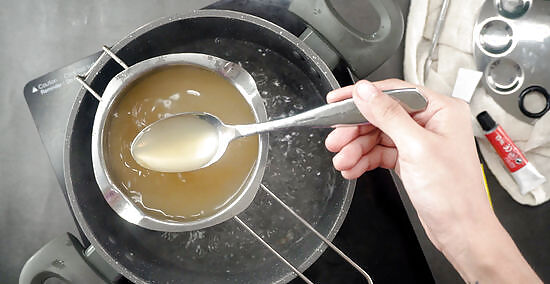
Heat the glue solution in a double boiler until it reaches 140 °F (60 °C). Stir the solution occasionally as the glue dissolves and becomes slightly sticky and thick. It's important to turn off the burner before the solution boils or gets hotter than 140 °F (60 °C). You can use an instant-read thermometer to determine the temperature.Tip: To set up a double boiler, place a pot on the stove and pour in at least 2 inches (5.1 cm) of water. Bring the water to a gentle simmer over medium heat and place the bowl with the soaking glue into the pot. The bottom of the bowl shouldn't touch the simmering water. The glue solution should look like thick chicken broth. If the solution boils, the gesso won't stick to your material very well.

Let the glue solution cool and weigh it. Once you've turned off the burner, pour the hot solution into another heat-proof bowl and leave it at room temperature until it's just warm to the touch. Then, place the bowl on a scale and weigh your solution. You'll need the weight of the solution to determine how much chalk and pigment to add.

Weigh an equal amount of whiting chalk or calcium carbonate. Set another bowl that weighs as much as the bowl with the glue onto the scale. Continue to add whiting chalk or calcium carbonate to the bowl until it weighs the same as the glue solution.Variation: If you want your gesso to be even whiter, scoop out 1/2 of the chalk that you weighed and replace it with titanium white pigment. You can buy whiting chalk at home improvement stores or online. In a pinch, you can finely grind sticks of chalk to use.

Stir the chalk into the solution until the gesso is smooth. Carefully pour the chalk or calcium carbonate you weighed into the glue solution and use a clean wooden spoon to stir it. Mix gently so you don't create air bubbles in the gesso. The chalk should dissolve quickly in the glue solution and you shouldn't see any lumps.

Stretch a stocking over a storage container and strain the gesso through it. Get out a clean storage container for your gesso and stretch a nylon stocking over the top. Then, slowly pour the gesso through the stocking to catch grit or impurities. You can use your hands to squeeze the gesso through the stocking. To store the gesso, cover the storage container tightly. It should keep indefinitely at room temperature.
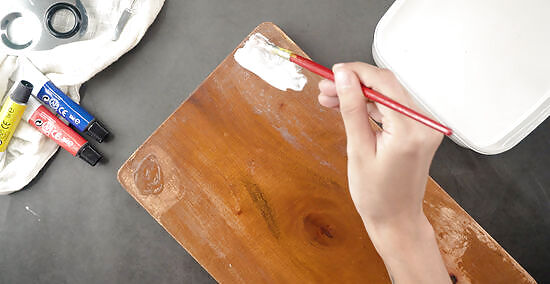
Use the gesso to prime rigid materials before painting on them. Dip a paintbrush into your gesso and brush it evenly over your rigid material. You could spread the gesso on wooden panels or fiberboard, for instance. Let the gesso dry completely before adding extra coats. It should take about 20 minutes for each coat to dry. Let the primed surface dry for at least 24 hours before you begin oil painting on it.













Comments
0 comment